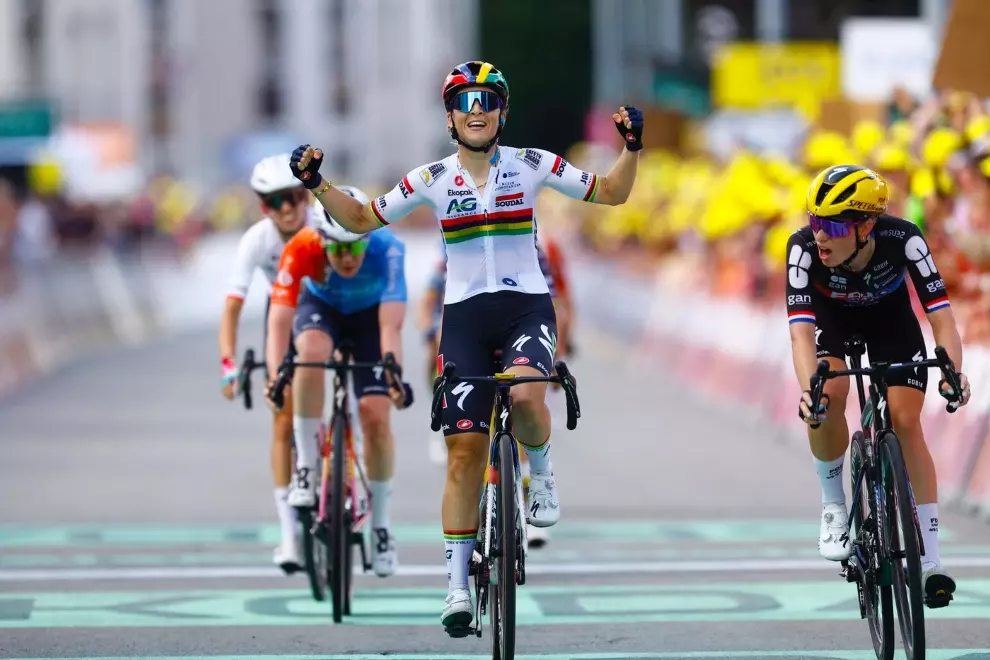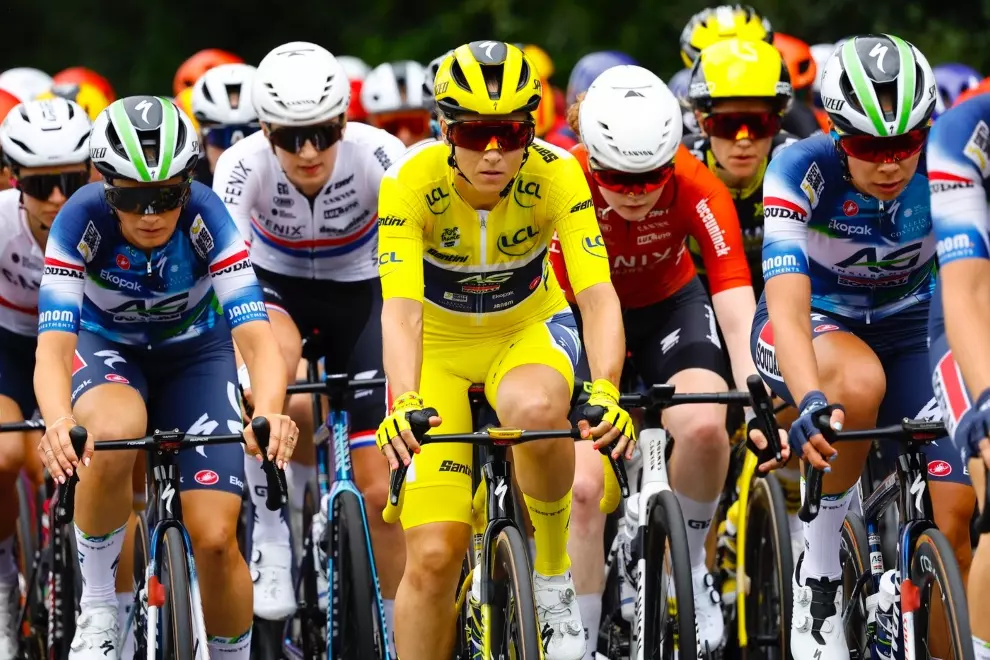In this article, we will delve deeper into the pressing issue of income inequality in women’s professional cycling. We’ll explore the challenges that female cyclists like Typhaine face, the impact of these disparities on their careers, and the efforts to bridge the income gap within the sport. Through this discussion, we aim to shed light on the experiences of these athletes and examine potential solutions to create a more equitable and sustainable future for women in cycling.
A difficult decision
Last month, Typhaine Laurance, a former junior national champion, announced her retirement from professional cycling just a few days short of her 25th birthday. Despite receiving a contract offer for 2024, she chose to step away from the sport, citing the financial challenges she faced. Laurance had been riding for the British Continental team Lifeplus Wahoo, earning around €1,000 a month. Her decision to retire was driven by her realisation that she could not sustain her life with such earnings.
In a candid interview with Le Parisien, she explained, “I asked myself a lot of questions throughout the year, and I realised the obvious: I can’t make a decent living from my sport, even if it’s my passion.
“With my English team, Lifeplus Wahoo, I received around €1,000 a month. In the years before, with Arkéa, it was between €400 and €700. I still live with my parents, and it’s impossible for me to get my own apartment. At 25 years old, you’ve got to start asking yourself questions, right?”
The disparity in earnings
Laurance’s situation is not an isolated case, either. In women’s professional cycling, the income disparity is shockingly wide. Currently, there is no minimum wage requirement for women’s UCI Continental teams. A recent survey by the rider union, The Cyclists’ Alliance, reveals that over 70% of female riders earn less than €10,000 annually. Perhaps even more concerning is that one in four female cyclists earns no income at all, making it nearly impossible for them to focus solely on their athletic careers.
Typhaine Laurance emphasised that the disparity in earnings has a profound impact on the competitive landscape of women’s pro cycling. While WorldTour teams have had to adhere to a minimum wage requirement since 2020 (currently €32,100), Continental teams remain in a constant struggle to make ends meet. The lack of structure in Continental teams compounds the challenges riders face, leaving many of them with their heads barely above water. Her decision illustrates the challenges faced by female cyclists and their need to explore alternative employment opportunities to secure a stable future.
Digging deeper into the data
Looking more closely at the data provided by The Cyclists’ Alliance survey, which has been conducted annually since 2018, we uncover some other troubling trends as well.
In 2023, the TCA survey demonstrates an alarming increase in financial disparity within the women’s peloton, with a rise in unpaid cyclists compared to 2022. The most striking finding is that a quarter of female riders receive no salary or income. Furthermore, more than 70% of non-WorldTour riders earn less than €10,000 per year, and over half of the peloton must balance their racing careers with work or education, indicating that efforts to professionalise the sport are not effectively reaching non-WorldTour teams.
The disparities between WorldTour and non-WorldTour riders also continue to widen. A majority of riders in the survey, 53%, represented Continental teams, while 41% rode for WorldTour teams. The contrast between these groups highlights the need for comprehensive policies to address income inequality in women’s pro cycling.

Financial insecurity, contract instability, and more
While changes in the WorldTour teams are a step in the right direction, the TCA survey reminds us that many riders still face significant financial barriers. The survey’s results indicate that the number of riders who can fully commit to cycling as their primary source of income remains a minority at 46%, with most of these riders belonging to WorldTour teams. A third of all riders report working second jobs alongside cycling, especially outside the WorldTour.
Female cyclists also face financial insecurity, in part due to contract instability. In 2023, 31% of surveyed riders were employed but 37% were self-employed. Contract durations add to the uncertainty with 47% having only year-long contracts. Longer-term contracts are still rare, with only 8% reporting contracts lasting three years or more.
The TCA survey included qualitative questions about the riders’ experiences, revealing decreased satisfaction. While 63% of respondents reported being “very happy” or “happy” with their teams, this figure was down from 74% in 2022. The number of riders who answered “neutral” increased from 15% to 22%, and those who claimed to be “very unhappy” or “unhappy” rose from 11% to 15%.
Riders also expressed dissatisfaction with the level of equipment provided and financial support for their careers. Many riders had to cover expenses like the UCI medical tests, basic equipment, and repairs themselves. Safety concerns, including helmet quality and concussion management, were common themes among the riders.
Stepping in to fill the holes
Indeed, there seems to be lots of discontent throughout the women’s peloton. Yet despite the challenges that persist, the cycling community and dedicated advocates are taking steps to find creative workarounds when it comes to addressing income inequality and ensuring the sport has a bright future. For example, the Cyclists’ Alliance has recently partnered with Strava to create a funding opportunity for promising female cyclists facing financial barriers. This grant, funded by Strava, aims to support young female cyclists by providing financial assistance for equipment, race entries, and professional support, helping them reach the professional level.
Acknowledging resilience as we continue fighting for a brighter future
Thus, while significant issues still need to be addressed, the overall vibe of the women’s programme and several trends suggested by the Cyclists’ Alliance’s survey findings offer a glimmer of hope. Some salaries are on the rise, more riders are securing spots on WorldTour teams, and improved protections are being put in place — demonstrating that new policies are having an impact.
The gap in funding and abilities in women’s professional cycling is gradually closing. Still, the pace of change must accelerate to meet the demands of a rapidly growing calendar and increasing expectations from sponsors and the audience. As we celebrate the progress made, we must remain committed to improving the situation for the next generation of female cyclists. The future of women’s professional cycling depends on our collective efforts to ensure a fair and financially sustainable environment for all athletes.
Ultimately, it is crucial to acknowledge the remarkable resilience and determination of women athletes in the face of income inequality. Many continue to endure sponsor uncertainty and financial hardships while training and racing, often without pay, in the hope that their efforts will eventually be rewarded. The cycling community must recognise the value these athletes bring to the sport and work collectively to address income inequality.




